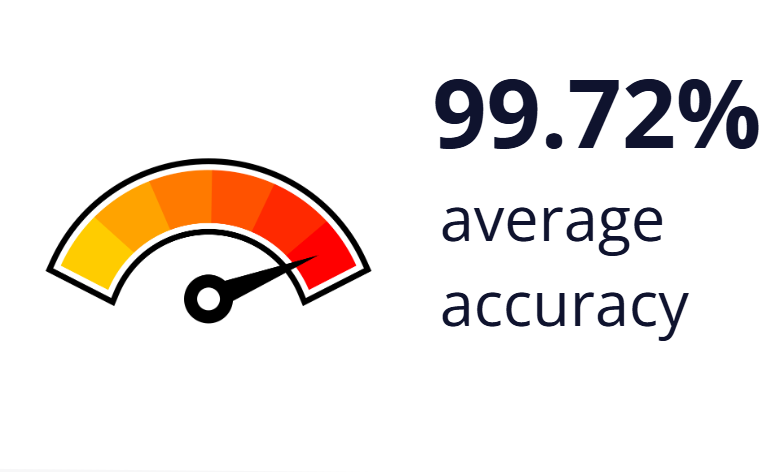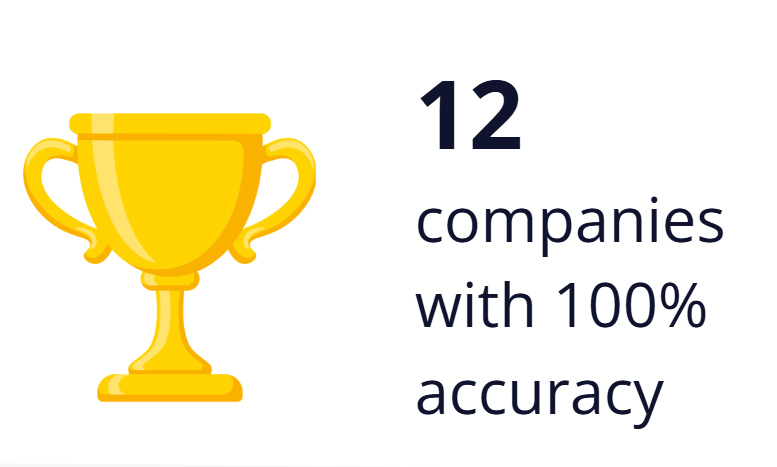
The Unseen Work Behind Financial Reporting Accuracy: What We Found in the ASX Top 20
Behind every ASX filing is a finance team doing the quiet, careful work of getting the numbers right.
It’s the kind of work that rarely gets noticed — and that’s exactly the point. When everything ties, totals, and reconciles, the assumption is: of course it does. But anyone who’s prepared a board pack, investor update, or ASX announcement knows how much effort that apparent ease takes.
To better understand this effort — and where things sometimes slip — we analysed the most recent 4D reports and accompanying information from the 20 largest ASX-listed companies. We used the Accurate Digits platform to review thousands of figures, performing the kind of digital "adds check" process you'd expect from a well-trained finance graduate with plenty of coffee.
📊 What We Actually Did
Scope:
Reviewed the most recent half-year (4D) reports and all supporting tables, charts, and commentary lodged with the ASX as part of the same release.
Tool:
Ran each document through the Accurate Digits platform — a tool designed to verify that reported figures add up correctly, including totals, subtotals, percentage changes etcetera.
🔍 What these checks covered:
Only numerical accuracy! This was not an audit, and we didn't assess narrative, accounting judgments, or compliance. But what we did assess gives a very clear lens into how tight the numbers actually are.
📈 Highlights

✅ The Results: Accuracy Worth Celebrating
The average accuracy rate across the ASX Top 20 was 99.72%.
12 of the 20 companies had no issues flagged by the platform at all — they passed every single check.


👏 It’s a credit to the finance professionals, reporting teams, reviewers, and CFOs who put in the hours behind the scenes. You can feel the spreadsheets, the late nights, the multi-tab cross-checks that went into achieving that level of quality — and it deserves real recognition.
❗ The Misses: Minor, But Worth Understanding
We identified:
- 62 inconsistencies — mostly subtotals that didn’t match component lines, or percentage changes that didn’t recalculate correctly.
- 104 rounding differences — more than half came from a single entity that appeared to take a stylistic approach to not rounding.
None of the issues were material. But many were avoidable.
These weren’t errors in judgement or disclosure. They were technical slip-ups — spreadsheet mechanics that snuck past review.
Why do they matter? Because every small inaccuracy increases review time, distracts key stakeholders, or raises questions from investors that shouldn't need to be answered.
And from experience, these minor inconsistencies can sometimes indicate broader gaps. I’ve previously found more serious errors in full-year reports of these same entities.
🔍 Where the Errors Showed Up
One of the clearest patterns:
The financial report reviewed by Auditors had the lowest number of errors with only 18% of all errors. The majority of issues came from the sections outside the audit perimeter:
- 📄 Directors’ Reports (40% of all errors)
- 📘 Other Information (42% of all errors)
Why? Likely because these sections are prepared late, handled outside the accounting team, handled outside specialised reporting tools, or aren’t included in the formal tick-and-tie process that auditors apply to the financial report itself.
It’s a reminder: these pages still matter.
🧠 Why Some Companies Slip (and Others Don’t)
We did see subtle patterns emerge:
- ✅ All Big Four auditors performed well. PwC-audited companies showed slightly fewer inconsistencies, though with only 20 entities reviewed, it’s not enough to draw firm conclusions.
- ⚒️ Mining and energy companies had higher error rates — likely due to custom disclosures and more operational metrics that sit outside standard formats.
- 🔢 Rounding practices varied widely — Most companies rounded across the board. One company didn’t round at all and another used mixed approaches.
- 🧩 Table structure matters — when layouts were clear, subtotals obvious, and ratio logic easy to follow, we found fewer issues. Clarity reduces guesswork — for your team, your auditors, and your reviewers.
- 🗺️ And in a friendly state-of-origin twist — the accuracy crown goes to NSW.
Companies headquartered in New South Wales had an average accuracy rate of 99.94%, outperforming Victoria (99.45%) and Western Australia (99.92%). Sorry other states — none of the ASX 20 companies analysed were based outside those three.)
🛠️ What Finance Teams Can Do
If you’re in charge of external reporting, here’s the key takeaway:
- Make sure someone checks the “Other Information” with the same care as the financial report reviewed or audited by your Auditors. Better yet, insist your auditors perform an additional tick and tie on these numbers too.
- Provide clear and logical tables. Be clear on how you present ratios, percentage changes, and movements — ambiguous labelling and use of sub-totals leads to errors.
- Be intentional with your rounding approach as all approaches have trade-offs.
🙌 The Quiet Work Matters
What we saw was impressive.
But it also showed us where reporting can slip — not through negligence, but because not every part of the report gets the same attention.
This review is a tribute to the finance teams doing the work that doesn’t always get seen. But it’s also a gentle nudge:
- The small things count
- The pages outside the financial statements still matter
- Consistency is a quiet but powerful signal of quality


